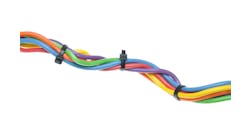Great article ("Alarm management for devices," April 2015). "I care," "I wish," "I can," "I could," "I go about." The question is, who is "I"? I think we have to acknowledge that "I" is many different people in the plant. "I" could be the operator, maintenance supervisor, reliability engineer, HSE officer or instrument engineer, etc.
Traditionally the focus has been on getting data and alarms to the operators, but with IIoT and pervasive sensing solutions, plants now have a second layer of automation that brings data from "things" that are beyond the PID to people that are beyond the control room. So, in my opinion, the key to preventing people from being flooded in data and alarms is to route them to the right people.
Another important aspect is to distill raw data into information and knowledge per the DIKW pyramid model. That is, instead of sending eight additional PVs from the heat exchanger to the operator once per minute, the expert analytics software for condition monitoring distills this into a single actionable "clean" or "do not clean" alarm to the maintenance manager.
I also agree with the alarm management analogy. In fact, the ISA 18.2 alarm management standard clause 3.1.46 refers to this as an "instrument diagnostic alarm." Only outright failures of critical devices that affect the process should go to the operators, so they can take evasive action. Predictive diagnostics about issues not yet affecting the process should not go to the operators; they should go to instrument maintenance. That is, the diagnostics in instruments have to be classified as failure, advisory or just information. And devices have to be ranked as critical or not.
Emerson introduced this concept as "PlantWeb Alerts" many years ago, and it has since matured into a NAMUR recommendation (NE107) supported by many vendors. All plants should look at implementing NE107. It will likely require a system software upgrade (relatively easy) and device upgrade (relatively easy with some fieldbus devices, but for the most part, will take some time, as it only comes into play as devices are replaced), so start this transition now.
The ISA108 standard is about this alarm rationalization process for "instrument diagnostic alarms." Part 1 will be released soon. In the meantime, you can also learn about it in the device diagnostics deployment guide found here. Devices should be shipped from the factory with suitable default settings for the NE107 instrument diagnostic alarm management to minimize the configuration burden.
The instrument diagnostic alarm management also can benefit from the process alarm management exercise. For instance, if a control loop is classified as critical, the devices used as part of that control loop should also be considered critical.
The intelligent device management (IDM) software part of the asset management system (AMS) should also support configuration templates to speed up the setup of instrument diagnostic alarm management in the devices. See, for instance, what Shell is doing with fieldbus on the largest FLNG vessel in the world here.




